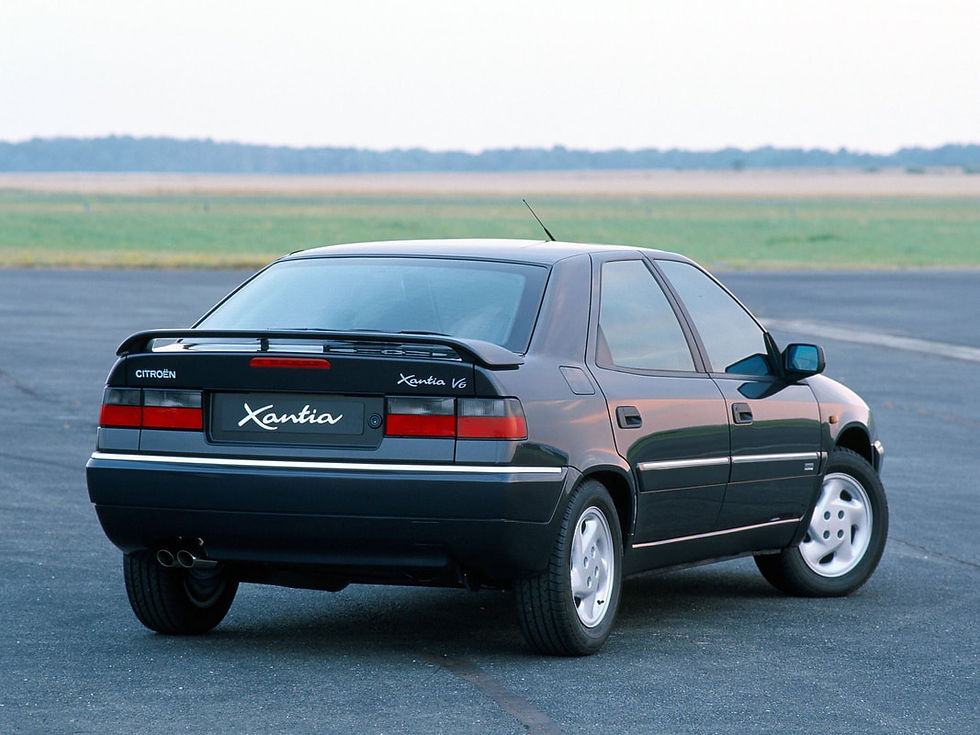[Citroën innovations] The legendary Citroën hydraulic suspension
- Jérémy

- Jul 30
- 4 min read

Comfort has always been a fundamental value for Citroën, a signature that has distinguished the double chevron brand since its origins. As early as 1919, the first Citroën, the Type A, set the standard for this philosophy by offering a level of driving pleasure superior to its contemporaries. This incessant quest for a calm driving and travelling experience was subsequently beautifully illustrated by the Traction Avant, a revolutionary car which, with its unitary body and innovative suspensions for the era, offered unprecedented road holding and comfort. But if one technology were to embody above all else Citroën's boldness and the primacy of comfort, it would undoubtedly be its famous hydraulic suspension, an innovation that would leave a lasting mark on automotive history.
The genesis of a revolution: hydraulics makes its entry
The history of this legendary suspension does not begin, as many believe, with the famous DS. Its true beginnings are found a little earlier, in the immediate post-war period. The need to improve comfort and road holding, particularly on the then poor road surfaces, pushed Citroën engineers to explore new avenues. It was in this context that the idea of a hydropneumatic suspension emerged, combining the compressible properties of a gas (nitrogen) with the incompressibility of a liquid (a specific mineral oil, LHM - Liquid Hydraulic Mineral, which would later replace the more corrosive LHS). The first vehicle to benefit from this major advancement was the Traction 15 Six H, launched in 1954. On this model, only the rear suspension was equipped with the hydraulic system, already offering a glimpse of the phenomenal capabilities in terms of smoothness and ride height control. This experience was crucial and paved the way for the widespread application of the technology. The following year, in 1955, the presentation of the DS 19 at the Paris Motor Show marked a decisive turning point. The "Goddess" incorporated hydropneumatic suspension on all four wheels, managing not only damping and flexibility but also ground clearance. It was a shock, a revolution. The DS seemed to float above the road, offering unparalleled comfort and astonishing dynamic road holding. Hydraulic suspension was no longer a simple option or a niche technology; it became the emblem of Citroën, synonymous with avant-garde design and princely comfort accessible to the general public, a hallmark recognised throughout the world.

Constant evolution: from classic hydropneumatic to hydractive
The integration of hydropneumatic suspension on the DS, then on other iconic models such as the ID, SM, GS, CX, BX, and also the XM and Xantia, demonstrated its robustness and ability to adapt to different vehicle configurations. However, true to their innovative spirit, Citroën engineers constantly sought to perfect this system. With the advent of electronics in the 1980s, new possibilities emerged to make the suspension even smarter and more reactive. This is how the Hydractive suspension was born, introduced on the XM in 1989. Hydractive I allowed the suspension's flexibility and damping to be varied according to speed, driving style, and road conditions, thanks to sensors and electronic management. The driver could also choose a Sport mode for a firmer response. This technology evolved to give rise to Hydractive II, further improving the precision of the settings and the system's reactivity. The pinnacle of this evolution was reached with the Activa system, available on certain versions of the Xantia. Activa, in addition to Hydractive II, added an exceptional active anti-roll system, allowing the car to corner almost flat, thus combining a very high level of comfort with impressive driving dynamics, pushing the limits of grip without ever compromising stability. The evolution continued with Hydractive III, notably present on the C5 and C6, offering even more advanced electronic management, simplified maintenance, and the ability to automatically adjust the ride height according to speed. However, despite its intrinsic qualities unanimously recognised by connoisseurs, the hydraulic suspension gradually faced challenges. Its complexity, and consequently its production and maintenance cost perceived as high by some customers, as well as a poor understanding of its specificities by a less informed public or those accustomed to conventional systems, led to a gradual decrease in its diffusion. Finally, in 2017, with the end of production of the C5 II equipped with Hydractive III+, Citroën put an end to the era of its iconic hydraulic suspension, turning a major page in its technological history.
Despite the end of production of its famous hydraulic suspension, comfort remains more than ever at the heart of Citroën's strategy. The brand has capitalised on this heritage to develop new approaches aimed at offering a global comfort experience, christened "Citroën Advanced Comfort". This philosophy now encompasses not only the suspensions (with Progressive Hydraulic Cushions that offer a "magic carpet ride" effect reminiscent of the hydraulic system), but also acoustics, light, seat treatment, and interior ergonomics. Thus, while the hydraulic suspension, this iconic technology that so impressed with its fabulous performance in filtering road imperfections and providing road holding, is no longer produced, the comfort DNA it symbolised continues to inspire the brand's engineers. Citroën perpetuates its tradition of offering a serene and relaxing driving experience, proving that comfort, inseparable from its identity, remains an absolute priority, even having taken new technological paths to achieve it.






Comments